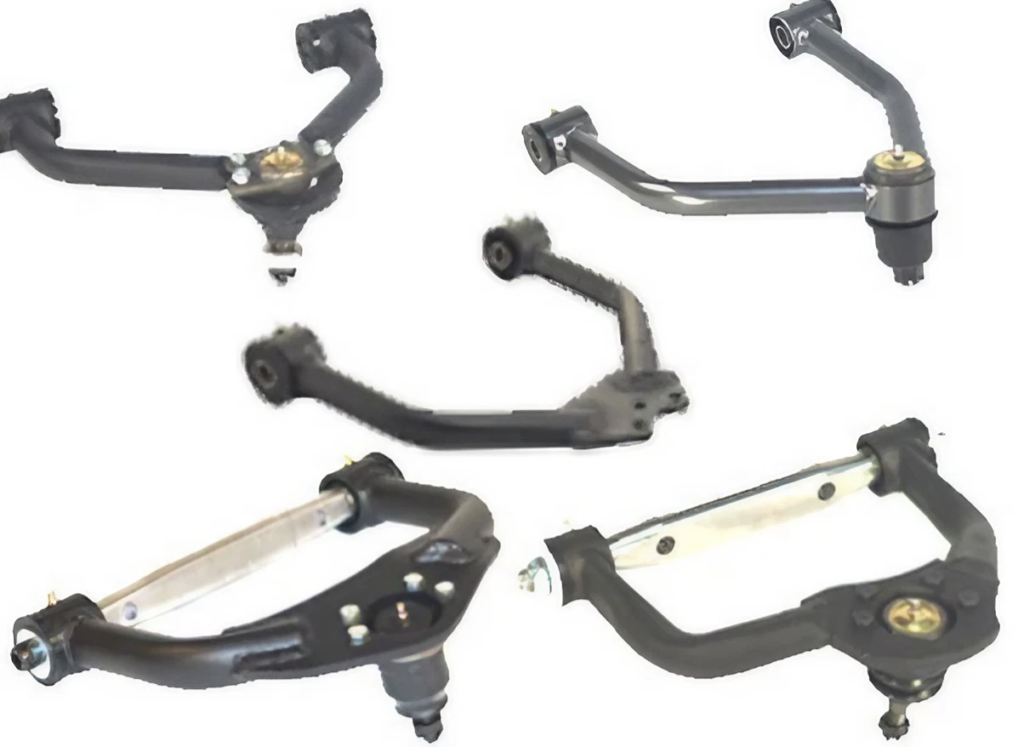In this article, we will explore the importance of proper grease fitting placement and access on lifted control arms. We will discuss the benefits of well-designed grease fittings, the challenges posed by poorly placed or inaccessible fittings, and the best practices for ensuring optimal lubrication of suspension components.
The Role of Grease Fittings in Lifted Control Arms
Grease fittings, also known as zerk fittings, are small, threaded components that allow for the injection of lubricant into the moving parts of lifted control arms.
These fittings are typically located near the bushings or ball joints, which are the points of articulation that require regular lubrication to prevent friction and wear.
The primary purpose of grease fittings is to provide a convenient and effective means of delivering lubricant to the critical areas of the control arms.
By using a grease gun, you can easily pump grease through the fitting and into the bushing or joint, ensuring that the component is adequately lubricated and protected against wear and tear.
Benefits of Proper Grease Fitting Placement
Proper placement of grease fittings on lifted control arms is essential for several reasons. First and foremost, it ensures that the lubricant can reach the intended areas effectively.
When grease fittings are positioned correctly, the grease can penetrate the bushing or joint evenly, providing thorough lubrication and reducing the risk of uneven wear.
Additionally, well-placed grease fittings make maintenance tasks more convenient and efficient. When the fittings are easily accessible, you can quickly attach a grease gun and apply lubricant without having to struggle with tight spaces or awkward angles.
Challenges of Poor Grease Fitting Placement and Access

Unfortunately, not all lifted control arms have optimal grease fitting placement and access. Some manufacturers prioritize aesthetics or cost savings over maintenance ease. This can hinder proper lubrication.
A common issue is placing grease fittings in hard-to-reach locations. Fittings in tight spaces or at awkward angles make attaching a grease gun and applying lubricant difficult. This can lead to incomplete or uneven lubrication, accelerating wear on bushings or joints.
Read More: ADD BLOG POST HERE
Consequences of Neglecting Control Arm Lubrication
Neglecting to regularly lubricate your lifted control arms can have serious consequences for your vehicle's suspension performance and longevity. Without proper lubrication, the bushings and joints can become dry and brittle, leading to increased friction and accelerated wear. This can result in a range of issues, including:
- Premature bushing or joint failure
- Reduced suspension articulation and performance
- Increased noise and vibration
- Uneven tire wear and handling issues
In extreme cases, neglected control arms can even lead to complete component failure, which can compromise the safety and stability of your vehicle. Regular lubrication is essential to prevent these issues and ensure that your lifted control arms continue to perform at their best.
Best Practices for Grease Fitting Placement and Access
To ensure optimal lubrication of your lifted control arms, it's important to follow best practices for grease fitting placement and access. When selecting aftermarket control arms or designing custom components, consider the following factors:
Accessibility and Ease of Use
Place grease fittings in easily accessible locations, even when the vehicle is lifted. Position the fittings on the top or side of the control arm to avoid obstacles and maintain ground clearance.
Ensure fittings are oriented for easy grease gun attachment. Angled or swiveling fittings are useful in tight spaces, offering more flexibility for positioning the grease gun.
Protection from Damage
Another important consideration is protecting grease fittings from damage. Off-road driving exposes fittings to rocks, debris, and other obstacles.
To mitigate this risk, some manufacturers use protective covers or shields around the fittings. These covers, made from durable materials like steel or aluminum, deflect impacts and prevent damage.
By keeping the fittings intact and functional, protective covers ensure your lifted control arms can be easily lubricated when needed.
Proper Grease Fitting Placement is Key
In conclusion, proper grease fitting placement and access are essential for maintaining lifted control arms' performance and longevity. Accessible, protected fittings ensure effective lubricant delivery.
By selecting lifted control arms or designing custom components, prioritize grease fitting placement and access. This makes maintenance tasks more convenient and efficient.
Discover more great products and best practices for keeping your suspension components in top shape at Airbagit.com.

